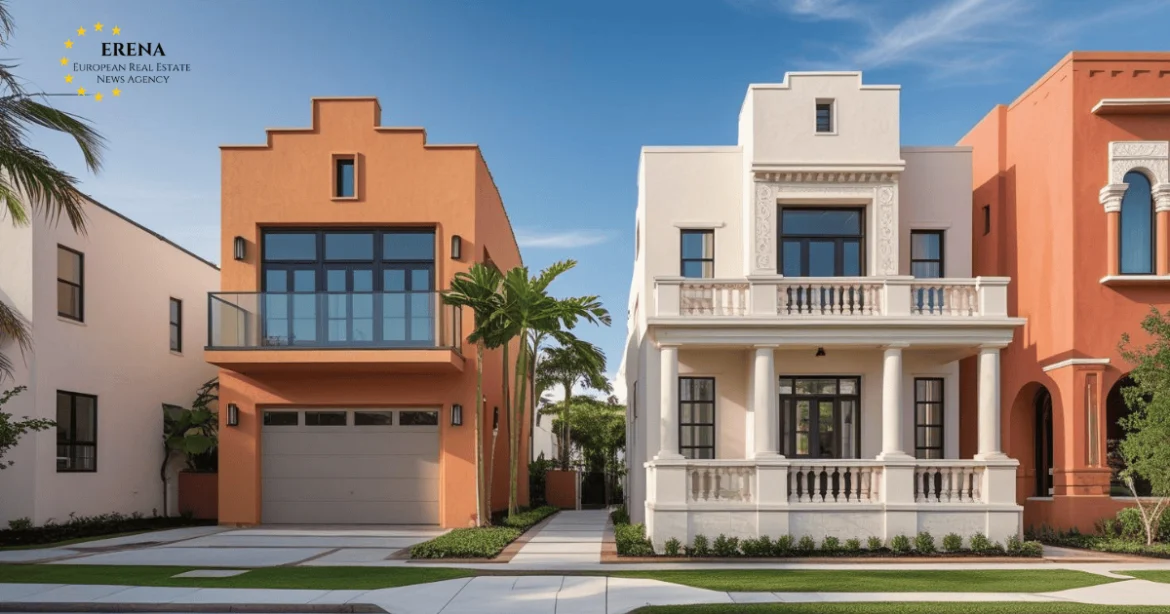Apple TV+’s 2025 series The Studio has captured attention far beyond television, appealing to both cultural audiences and architecture enthusiasts. The fictional “Continental Studios” setting blends two distinct architectural visions: Frank Lloyd Wright’s monumental Mayan Revival and John Lautner’s futuristic modernism. This deliberate interplay transforms the backdrop into a character of its own, mirroring Hollywood’s continuous struggle between legacy and reinvention.
Wright’s Mayan Revival Brought to Life
Production designer Julie Berghoff wanted the Continental headquarters to feel like a powerful relic of the past. Wright’s 1920s textile-block houses—most famously the Ennis House and the Storer House—served as direct inspiration. With CNC routing and plaster blocks, the production team recreated the heavy, temple-like walls that carried echoes of ancient Mesoamerican architecture.
The Ennis House itself is one of Los Angeles’ cultural icons. Following extensive restoration, it sold in 2019 for €15.5 million, confirming its status as both a cinematic landmark and an architectural investment. The Storer House, another textile-block design, changed hands in 2015 for €5.8 million, showing how Wright’s vision consistently commands premium prices.
Lautner Futuristic Vision on Screen
While Wright embodied permanence, Lautner captured movement, optimism, and innovation. The Studio filmed in several of his houses, adding visual depth and narrative resonance. The Harvey House (1950), with its bold sunburst doors, influenced the series’ entrance design.
Seth Rogen’s character resides in the Foster Carling House (1950), famous for its swiveling glass wall and a pool that flows seamlessly indoors and outdoors. It last sold in 2014 for €2.6 million. Another standout, Silvertop (1957–76), with sweeping concrete curves and futuristic flair, appeared in a key episode. Once unfinished, it was purchased in 2014 for €7.3 million and later fully restored to Lautner original intent.
Market Value Beyond Luxury
Wright and Lautner homes are not typical luxury estates. They are rare cultural artifacts with a market driven by scarcity and legacy. Wright completed only a handful of Mayan Revival projects, and Lautner most iconic works are equally limited. This rarity ensures strong competition among collectors, driving prices ever higher.
The €15.5 million paid for the Ennis House and the €7.3 million for Silvertop reflect the art-like value of these properties. For buyers, originality and historical significance outweigh conventional metrics like square footage or modern amenities.
Architecture as Narrative
In The Studio, architecture becomes a metaphor for Hollywood itself. Wright’s Mayan Revival symbolizes weight, continuity, and the burden of tradition, while Lautner futuristic forms represent innovation and adaptation. Together, they embody the industry’s struggle to balance heritage with reinvention.
Even viewers unfamiliar with architecture feel this contrast. Wright’s massive blocks exude permanence, while Lautner flowing geometries suggest openness and possibility. This dialogue between eras enriches the show’s storytelling.
Public Access and Exclusivity
Some Wright buildings, such as the Hollyhock House in Los Angeles, are open to visitors, with ticket prices typically ranging between €6 and €11. They allow the public to experience first-hand the architectural language that inspired The Studio’s set design.
Most Lautner properties, however, remain privately owned, known to the public largely through films, series, and architectural publications. This exclusivity enhances their allure, making them coveted cultural treasures.
Conclusion
The Studio succeeds in more than comedic storytelling—it revitalizes appreciation for two transformative architectural legacies. Wright’s Mayan Revival works, commanding prices in the tens of millions, symbolize tradition and permanence. Lautner futuristic homes, equally prized, embody vision and daring. Both continue to influence real estate markets and cultural imagination.
For collectors, investors, and admirers, these houses represent far more than luxury living. With sales spanning €2.6 million to €15.5 million, they stand as irreplaceable works of art. Thanks to The Studio, their influence reaches new audiences, proving once again how architecture shapes stories, markets, and cultural memory.

